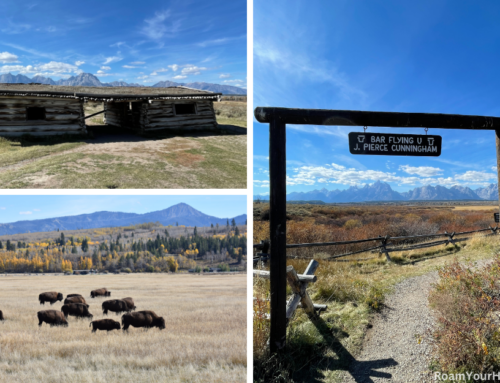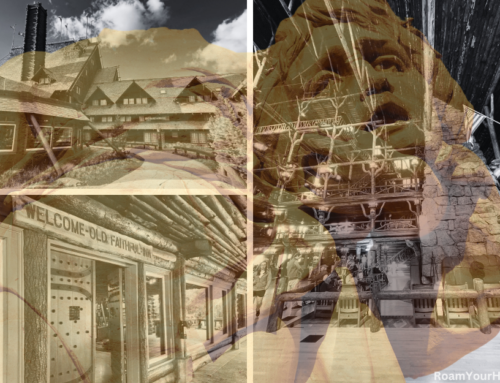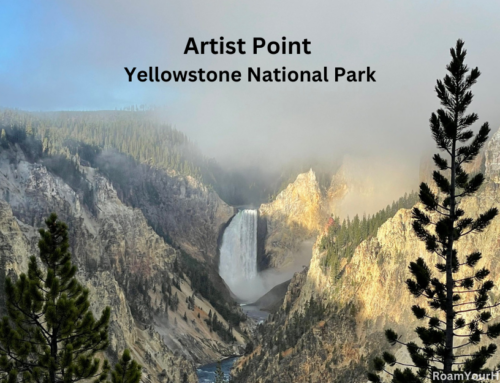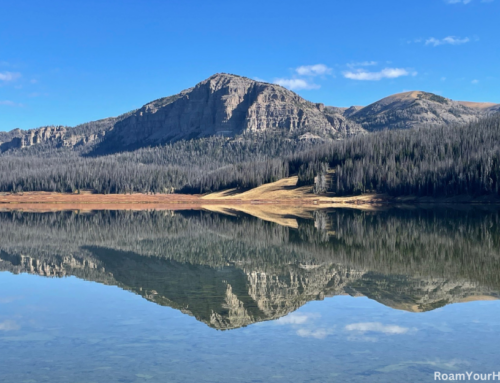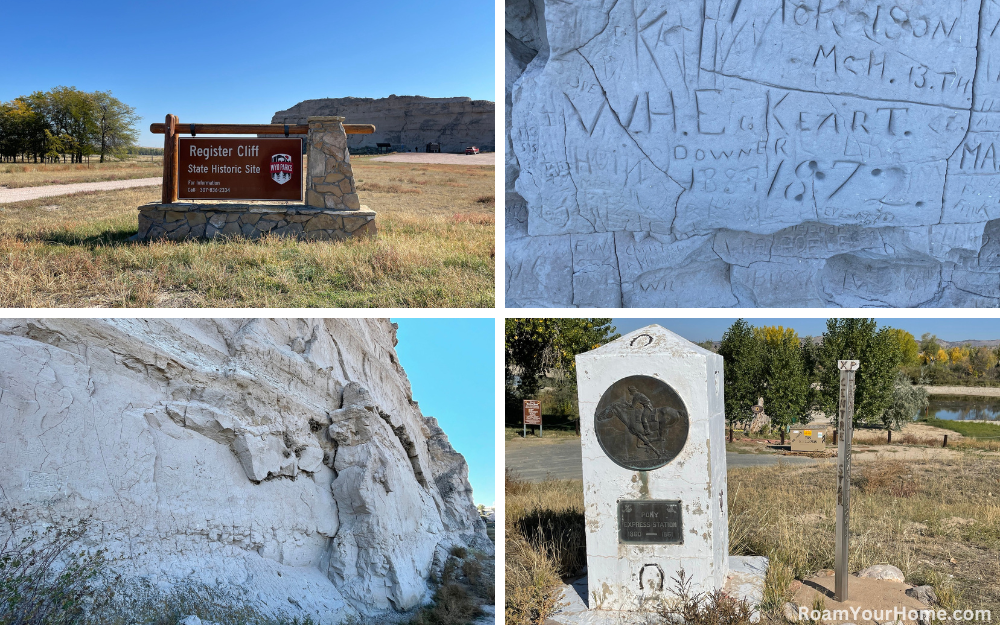
Register Cliff: Historical Graffiti along the Oregon Trail
Register Cliff State Historic Site is located in eastern Wyoming, just outside of the small town of Guernsey. My wife and I visited on a sunny but cool fall afternoon. We were on a ten-day road trip and hitting a few Oregon Trail sites along the way. We had just left the Oregon Trail Rut State Historic Site or Guernsey Ruts a few miles away.
As we pulled up, a few cars were in the parking lot, but it was not crowded. I was not sure what to expect, having not done a whole lot of research prior. I expected to see a few signatures of pioneers but was delighted to find a truly amazing displace of history etched in stone.
Register Cliff: A landmark along the Oregon Trail
Register Cliff, as it would become known, was a full-day journey from Fort Laramie to the east back in the 19th century. Emigrants would often spend the night at Register Cliff. The chalky, soft limestone rises 100 feet above the North Platte River Valley. It would become one of the most prominent of the many places along the Oregon Trail where emigrants carved their names into rock. Register Cliff is the easternmost and one of the three best-known ”registers of the desert.” The other two are Independence Rock, in the central part of the state, and Names Hill, in western Wyoming.
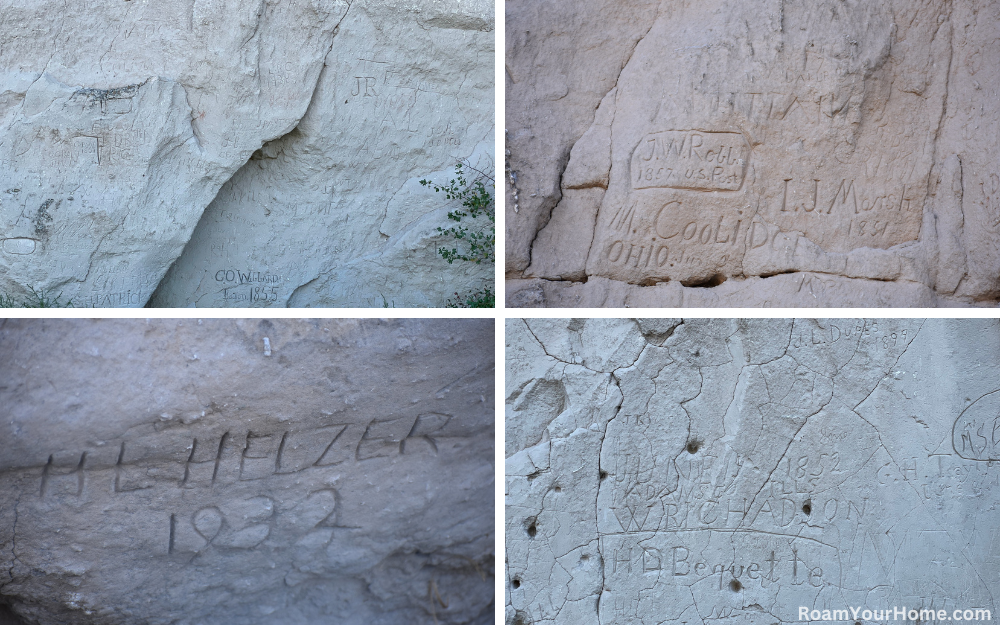
Hundreds of names are visible at the historic site
Today, more than 175 years since the great migration west, over 700 names can still be seen on the cliff and nearby rock outcroppings. Knowing how many people left their mark on the rock is impossible. But it is known, at one time, the names included dates as early as 1829 and one reportedly from 1797, both of which were judged to be authentic. That would mean non-native people passed by here well before Lewis and Clark trekked to the Pacific Ocean. The people would have likely been mountain men involved in the fur trade. Most still visible names today were carved during the 1840s and 1850s when the Oregon Trail was at its height.
As the use of the Oregon Trail declined, the rock lived on. Others, such as soldiers at Fort Laramie, ranchers, and cowboys, scratched their names into the rock. There are believed to have been some Native American petroglyphs at one time as well. Those are long gone, however, either eroded or carved out by emigrants.
Hundreds of thousands of people traveled the Oregon Trail
As we walked along the limestone bluff, some of which was protected from graffiti with a metal fence, it was incredible to think of all the stories that were not only written down but that also passed through here. As many as 500,000 people came along the Oregon Trail, many of whom would have rested their heads and walked along the same paths we were on that very afternoon.
We spent about an hour at the site, reading the names etched in history: James Huge, E. Hoover (1865), G.O. Willard (1844), G. Root (1844), L.J. Masti (1851), J.W. Roll (1857 U.S. Post), and so many more.
Register Cliff State Historic Site is a bit remote, but I’m certain that you, like we did, will find it well worth the visit.

